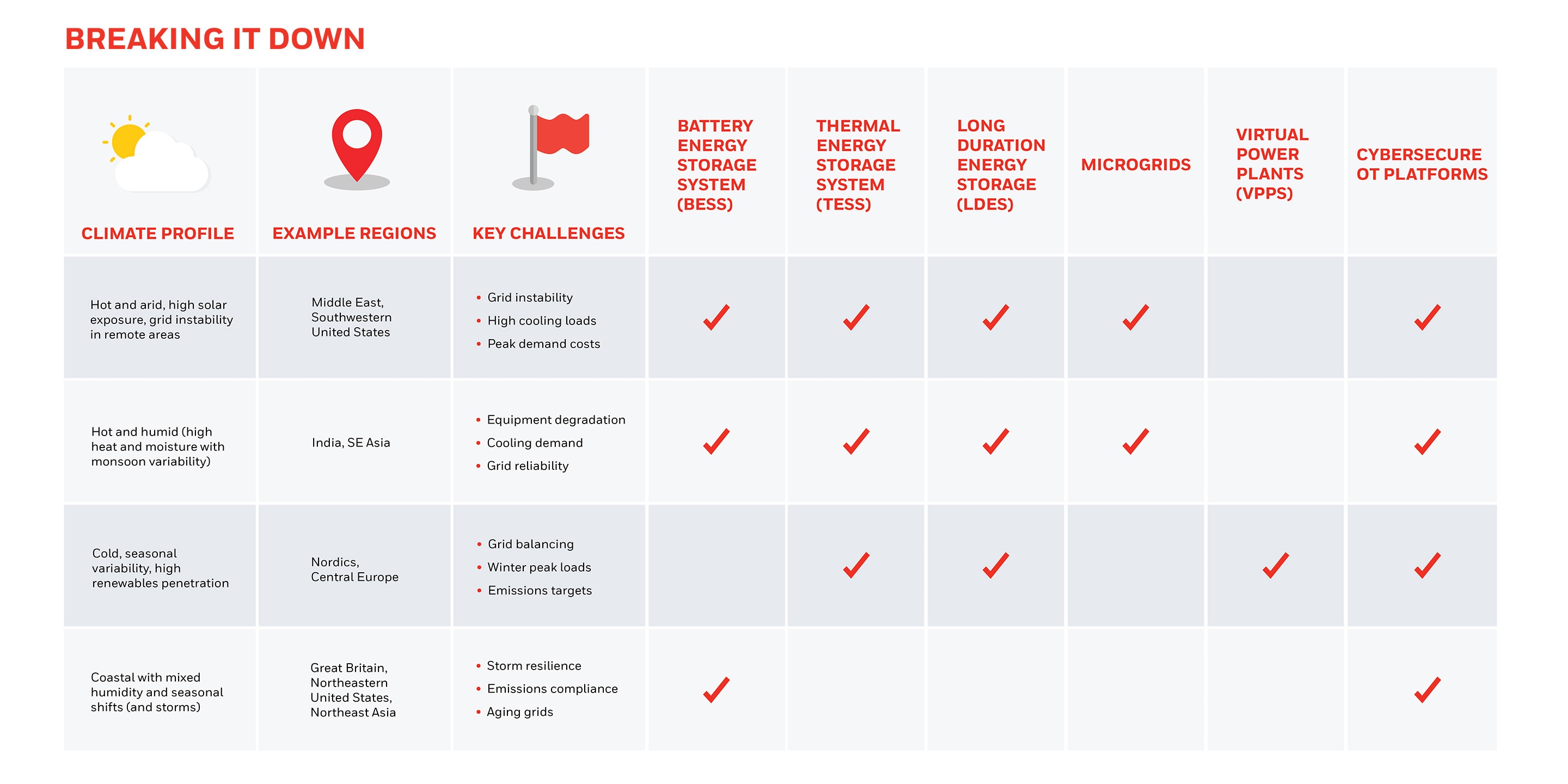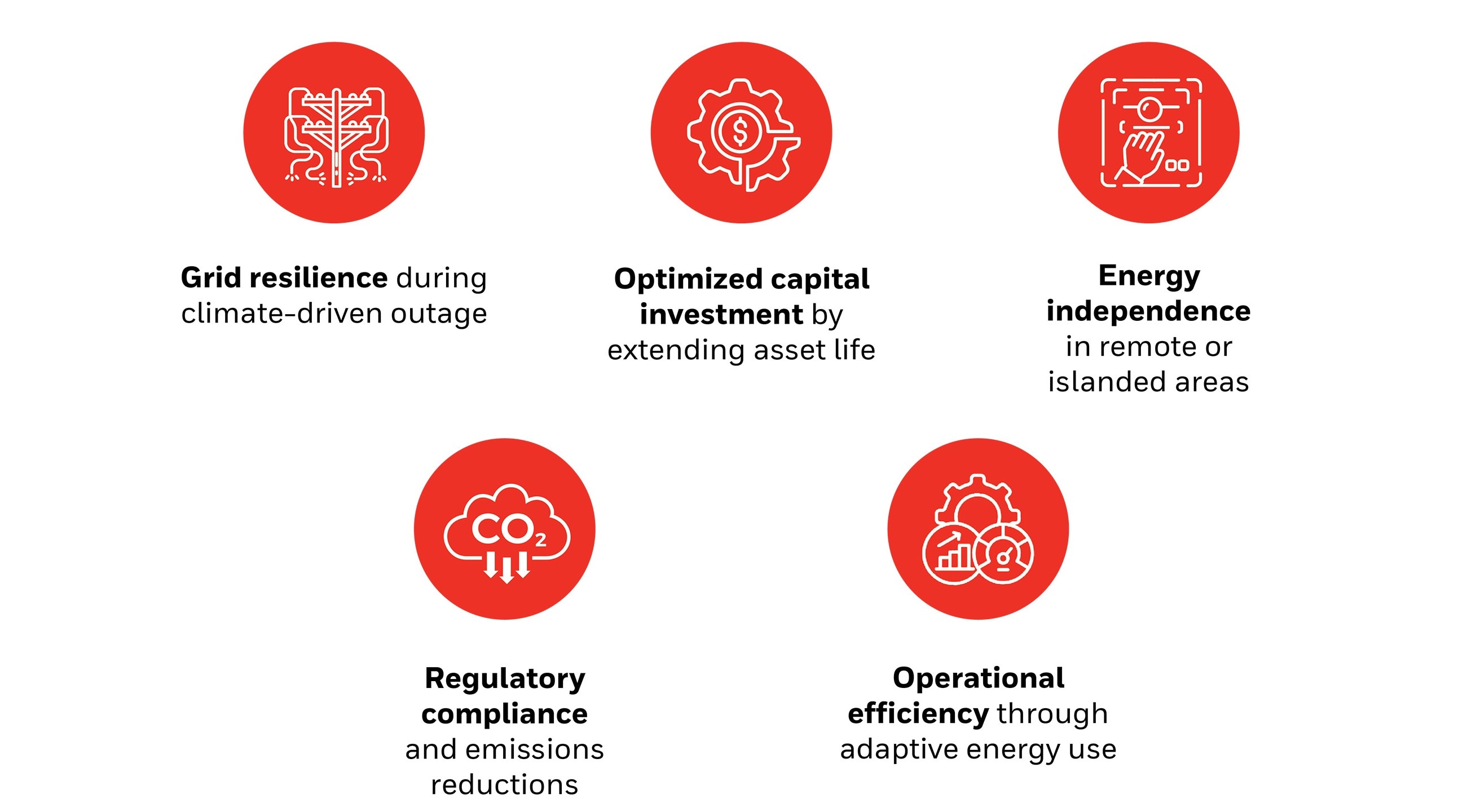What you will learn from this article:
- How climate affects the reliability of energy storage systems
- Key energy storage technologies for different environments
- Tips for selecting storage solutions based on local weather challenges
In a world facing escalating energy demand, optimizing traditional and renewable energy use with energy storage solutions can help achieve greater stability. When it comes to choosing the right storage strategy, there is no one-size-fits-all solution — and where a facility is located is an increasingly important factor to consider. Local climate and weather conditions, from excessive heat to extreme cold, can profoundly impact a system’s reliability and cost effectiveness. Selecting an energy storage solution without taking the site’s climate into account can potentially compromise resilience and profitability.
Let’s dive deeper into this challenge and explore how to effectively choose solutions best suited for the climate where they are used:
Why Choosing the Right Energy Storage Solution Matters
Global climate extremes have the potential to negatively impact energy storage infrastructure performance. In hot climates, energy storage systems must withstand high ambient temperatures while maintaining efficiency, whereas cold or windy regions require thermal insulation and need to adjust to wider operating temperature ranges.
In areas with high humidity, corrosion resistance and moisture management become the priority. For example, lithium-ion batteries — widely used in Battery Energy Storage Systems (BESS) — may experience thermal degradation or safety concerns in extreme heat. Yet, Long Duration Energy Storage (LDES) technologies, such as flow batteries, are specifically engineered to deliver in the harshest conditions.
An energy storage system not tailored to its environment can lead to operational inefficiencies, increased maintenance costs, system downtime or even safety hazards. In worst case scenarios, infrastructure could fail during heatwaves, winter storms and unpredictable events — leading to power outages, lost revenue, reputational damage or regulatory penalties. Having the right energy storage technology, designed for the unique demands of your climate, is crucial to operational resilience.
Different Types of Energy Storage Solutions
Today’s market offers a diverse set of energy storage options. Honeywell has deep expertise and ready-now solutions necessary to support resilience, cost management and operational efficiency suited for different regions of the world.
- Battery Energy Storage System (BESS)
- Benefits: BESS offer fast response and high energy density, making them ideal for grid balancing and peak shaving; however, they require temperature-controlled environments to operate efficiently.
- Climate consideration: In hot or cold climates, cooling and heating systems must be factored into the total cost of ownership.
- Thermal Energy Storage System (TESS)
- Benefits: TESS store excess energy in the form of heat or cold, often using materials like molten salt or ice.
- Climate consideration: These systems excel in climates where there are large swings in temperature or where waste heat can be reused, such as deserts or industrial zones with process heat.
- Long Duration Energy Storage (LDES)
- Benefits: LDES can operate over longer discharge durations — often more than 10 hours — and solutions like flow batteries are more tolerant of high temperatures compared to lithium-ion systems.
- Climate consideration: Their scalability and durability make them ideal for grid support in extreme heat zones or remote areas.
- Microgrids
- Benefits: Microgrids integrate various distributed energy resources and storage systems, allowing facilities to operate independently from the main grid.
- Climate consideration: In climate-sensitive regions, microgrids provide redundancy and flexibility, especially when combined with solar, wind and BESS or TESS technologies.
- Virtual Power Plants (VPPs)
- Benefits: VPPs aggregate decentralized energy resources and storage, providing grid services without the need for a physical plant.
- Climate consideration: While VPPs themselves are software-driven, the underlying assets (solar panels, batteries or generators) must be selected based on regional climate resilience.
Benefits of a Climate-Specific, Integrated Approach
Often, the best approach isn’t just one energy storage solution but a combination that works together to provide balance, redundancy and resilience. A hybrid approach — such as integrating BESS with TESS or combining microgrids with VPPs — can offer flexibility and redundancy, reducing the risk of climate-induced failure. Choosing the right combination of technologies, tailored to the local climate and other factors like capacity, available space and intended use, can unlock several benefits:
Why Prioritizing a Scalable Communications System is a Must
Successful energy storage solutions depend on robust controls and communication.
For example, Honeywell’s Experion® platform supports complex energy systems by unifying demand and supply control. As a scalable energy management system, Experion® integrates Supervisory Control and Data Acquisition (SCADA)-based remote operations, battery energy storage, microgrid and renewable energy control and advanced analytics. It provides centralized oversight, supports renewables integration and helps boost efficiency for industrial customers in demanding settings, whether managing a single site or global network.
Honeywell Is Your Energy Storage Partner
The future of energy demands intelligent, adaptive solutions designed to thrive amidst evolving climate conditions and operational complexities. By embracing tailored energy storage strategies aligned with environmental realities and managed by a scalable communications system, organizations can achieve greater efficiency, reliability and resilience.
No matter the complexity of your energy storage needs, Honeywell stands ready as your proven partner in this evolution.
For a deeper dive, download our new eBook, The Role of Energy Storage in Building a Resilient, Cost-Effective Grid of the Future.






